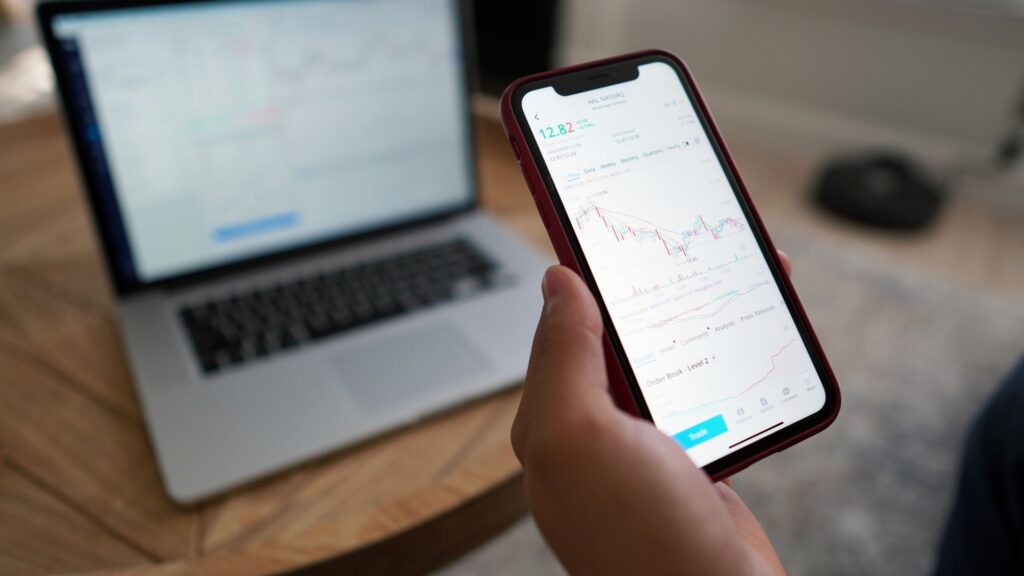The relationship between leverage and margin is that the amount of leverage you use determines the margin required by your broker.
Margin in forex trading refers to the amount of money a trader needs to open and maintain a position. It acts as a security deposit or collateral that the broker holds until the trade is closed.
Contrary to popular belief, the margin isn’t a cost or a fee; it’s a portion of your account balance set aside to support your open positions.
For instance, if your broker requires a 1% margin to open a position, and you want to trade one standard lot (100,000 units) of currency, you’ll need $1,000 in your trading account. This $1,000 is the margin, which ensures that you can cover potential losses from your trades.
On the other hand, leverage in forex trading allows traders to control a larger position in the market with a smaller amount of capital. It’s essentially borrowing money from your broker to increase your trading position’s size. For example, if you use 100:1 leverage, you can control $100,000 worth of currency with just $1,000 of your own money.
Leverage is often described as a double-edged sword because it can amplify both your profits and losses. While high leverage offers the potential for significant gains, it also increases the risk of substantial losses, even if the market moves slightly against you.
In This Post
What is the Relationship Between Leverage and Margin?
The relationship between margin and leverage is straightforward: the amount of leverage you use determines the margin required by your broker.
- Leverage Calculation: Leverage is expressed as a ratio, such as 50:1, 100:1, or 500:1. This ratio shows how much of a position you can control compared to the margin. For instance, with 100:1 leverage, you can control $100,000 with $1,000.
- Margin Requirement: The higher the leverage, the lower the margin requirement. If your broker offers 100:1 leverage, you’ll need only 1% of the position size as margin. If the leverage is 50:1, the margin requirement is 2%, and so on.
Simply put, leverage and margin are inversely related: as leverage increases, the margin requirement decreases, and vice versa. This relationship allows traders with smaller capital to participate in large trades, but it also exposes them to greater risk.
The Risks and Rewards of Using Leverage
Leverage can be a powerful tool, but it’s essential to use it wisely. While it magnifies potential profits, it also magnifies potential losses. Here’s a quick look at the pros and cons:
- Pros:
- Increased Buying Power: Leverage allows you to trade larger positions than your account balance would otherwise permit.
- Higher Potential Returns: With leverage, small price movements can result in significant profits.
- Cons:
- Increased Risk: Leverage amplifies losses, which can lead to rapid depletion of your trading account.
- Margin Calls: If the market moves against your position, your broker may issue a margin call, requiring you to deposit more funds or close positions to meet the margin requirement.

How to Manage Margin and Leverage Wisely
To successfully navigate the relationship between margin and leverage, consider the following tips:
1. Use Leverage Sparingly
Leverage can amplify both profits and losses, so it’s crucial to use it wisely. Only apply leverage when you are confident in your trade and have thoroughly analyzed the market conditions.
Additionally, having a well-defined risk management strategy, such as setting stop-loss levels and determining the maximum amount you’re willing to risk on a trade, is essential. This careful approach helps protect your capital from significant losses due to market volatility.
2. Monitor Your Margin Level
Your margin level is a key indicator of your account’s health. If it drops too low, you risk a margin call, where your broker may automatically close some or all of your positions to protect against further losses.
Regularly checking your margin level allows you to stay ahead of potential issues and take action before a margin call occurs. Many brokers offer tools or indicators that make it easy to track your margin level in real-time, so use these resources to stay informed.
3. Employ Stop-Loss Orders
Stop-loss orders are a critical risk management tool that can protect your account from severe losses. By setting a stop-loss, you instruct your broker to close a position if the market moves against you by a certain amount.
This automated process ensures that your losses are limited, even if you’re not actively monitoring the market. Stop-loss orders are especially important when using leverage, as they help prevent small adverse movements from turning into significant losses.
4. Understand Your Broker’s Margin Requirements
Margin requirements can vary significantly between brokers, affecting how much capital you need to maintain open positions. Before placing any trades, make sure you fully understand your broker’s margin policies, including the minimum margin level and how margin calls are handled.
This knowledge will help you avoid unexpected surprises and better manage your trading account, ensuring that you have enough capital to sustain your positions without undue risk.
Frequently Asked Questions
1. What happens if I don’t meet a margin call?
If you don’t meet a margin call, your broker may close some or all of your open positions to bring your account back within the required margin level. This process is known as a “margin call liquidation.” It can result in significant losses, especially if the market has moved against your positions.
2. Can I trade without using leverage in forex?
Yes, you can trade without using leverage, but you would need to fund your account with the full value of the positions you wish to trade. Without leverage, your potential gains and losses are proportional to your account balance, which may limit your ability to trade larger positions.
3. How does high leverage affect my trading strategy?
High leverage allows you to control larger positions with less capital, potentially increasing your profits. However, it also increases your risk, as small market movements can result in significant losses. High leverage requires careful risk management, such as setting stop-loss orders and avoiding over-leveraging your account.
4. What is the difference between margin and leverage?
Margin is the amount of money you need to open and maintain a trading position, while leverage is the ratio that determines how much you can control in the market with a given margin.
Leverage amplifies both potential gains and losses, while margin ensures you have enough capital to support your open positions.
Conclusion
The relationship between margin and leverage is a key factor in forex trading. While leverage offers the opportunity to amplify profits, it also comes with increased risk.
By understanding how margin and leverage work together, you can make more informed trading decisions and better manage your risk in thevolatile forex market. Always trade responsibly and use leverage with caution to protect your capital.
This approach to margin and leverage can help traders of all levels enhance their understanding and trading strategy, leading to more consistent results in the long run.




